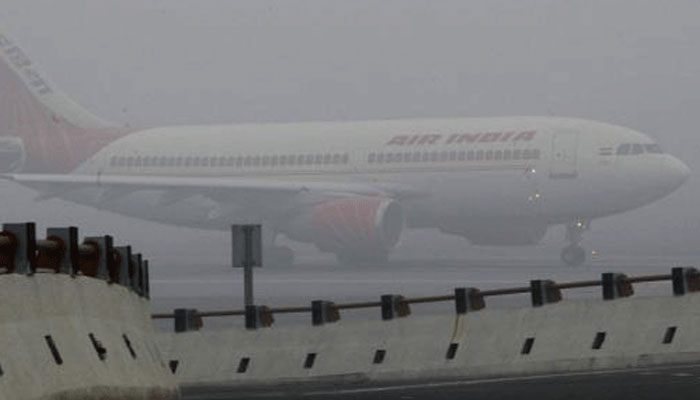TRENDING TAGS :
Delhi Airport's Unique Revenue Model: Beyond Flights and Runways
Discover how Delhi's Indira Gandhi International Airport is redefining revenue generation, facing losses in flights but thriving in non-aero sectors.
Delhi Airport's Unique Revenue Model: Beyond Flights and Runways
Delhi's Indira Gandhi International Airport, managed by GMR Airports, is carving a distinctive niche in the aviation industry by pioneering an innovative revenue model that extends beyond traditional flight operations. In the recently reported Q3-FY24 financials, the airport declared a loss of INR 127.7 crore. However, a closer look reveals a fascinating story of resilience and adaptability, with non-aero sectors emerging as the unsung heroes of the airport's financial landscape.
Total income for the specified quarter stood at INR 1322.9 crore, with a remarkable 57.4% of this figure coming from non-aero revenue. The star performer in this category was non-aero income, soaring to INR 759.7 crore. This strategic shift underscores the airport's transformation into more than just a transit hub; it is evolving into a multifaceted destination, reminiscent of a mall-like experience.
The airport's aero revenue, comprising traditional sources like airline terminal space rentals, landing fees, and usage fees, reached INR 269.9 crores, showcasing a 7.2% sequential growth. In contrast, non-aero revenue, encompassing rentals, retail, food and beverage, duty-free shops, advertising, and car parks, took center stage, outpacing aero revenue by nearly threefold. Create Compelling Ads and Social Creatives for Free with This Tool
A significant contributor to non-aero revenue was the retail sector, where the airport experienced a surge in earnings, reaching INR 759.7 crore. This figure not only marked an 8% increase compared to the previous quarter but also reflected a substantial 12.5% growth compared to Q3-FY23. The numbers affirm the airport's success in creating an environment that goes beyond being a transit point, turning into a destination in itself.
The airport's non-aero revenue was also buoyed by rentals in Aerocity, demonstrating a remarkable 39% increase, totaling INR 195.6 crore for the last quarter. For the nine months ending December, Delhi's non-aero revenue reached a substantial 21.7 billion rupees, with 28% originating from retail, 19% from space rentals, and over 1.5 billion rupees generated from advertising.
The duty-free spending per passenger for the nine months ending December 2023 stood at an impressive INR 1005, reinforcing the airport's appeal as a shopping and dining destination. The non-aero income per passenger, a crucial metric for evaluating the success of this revenue model, stood at INR 360 for Delhi, emphasizing the airport's significant achievements in creating a diverse and appealing traveler experience.
While Delhi's airport has faced criticism during periods of fog for passenger facilities and seating concerns, this challenge is distinct from its successful venture into the non-aero revenue landscape. The airport's foray into becoming a mall-like experience is in line with global trends, where large capital-intensive projects increasingly focus on non-aero businesses, city-side development, and long-term concessions as revenue streams. Create Compelling Ads and Social Creatives for Free with This Tool
Globally, airports generate around 40% of their revenue from non-aero sources, according to the ACI Airport Economics report of 2019. Delhi Airport, with its 57.4% non-aero revenue contribution, has surpassed this benchmark. Singapore's Changi Airport, often lauded for its innovative approach, mirrors Delhi's emphasis on non-aero revenue, with approximately 55% of its income derived from these sectors.
The first phase of airport privatization in India adopted a revenue-sharing model, where a percentage of the total revenue is shared with the Airports Authority of India (AAI). This approach not only benefits AAI but also facilitates the development of smaller airports or the operationalization of previously unused airports.
As Delhi Airport aspires to compete globally and enhance the traveler experience, it must continue investing in attracting renowned global brands in retail and food. The airport's attractiveness should not solely hinge on cost and connection time but also on the overall airport experience. A delicate balance between retail, food and beverage, duty-free offerings, and service standards for security checks, check-in, and waiting areas will be key to sustaining this innovative revenue model.
In conclusion, Delhi Airport's journey towards becoming a mall-like destination is a testament to its adaptability and foresight in navigating the evolving landscape of airport economics. While challenges persist, the airport's success in generating substantial non-aero revenue positions it as a leader in redefining what an airport can be—an immersive, dynamic space that goes beyond facilitating flights, offering a unique and rewarding experience for travelers.



